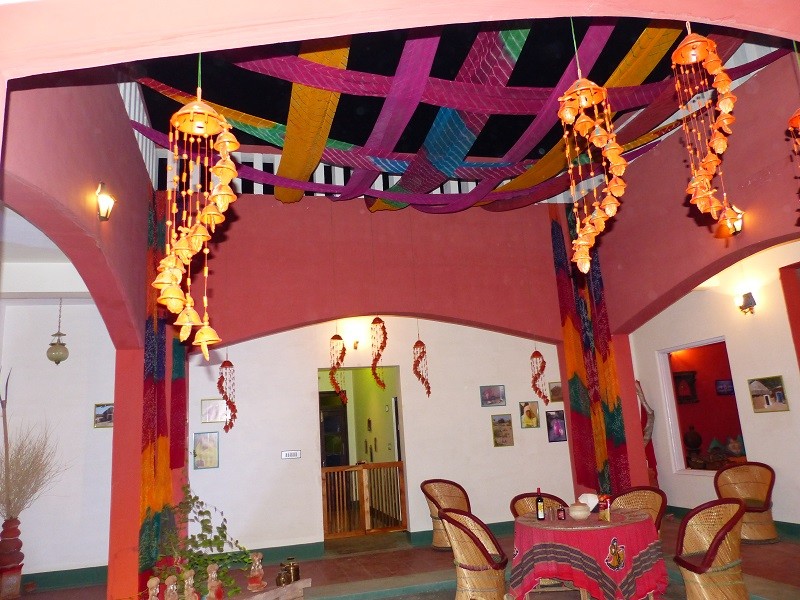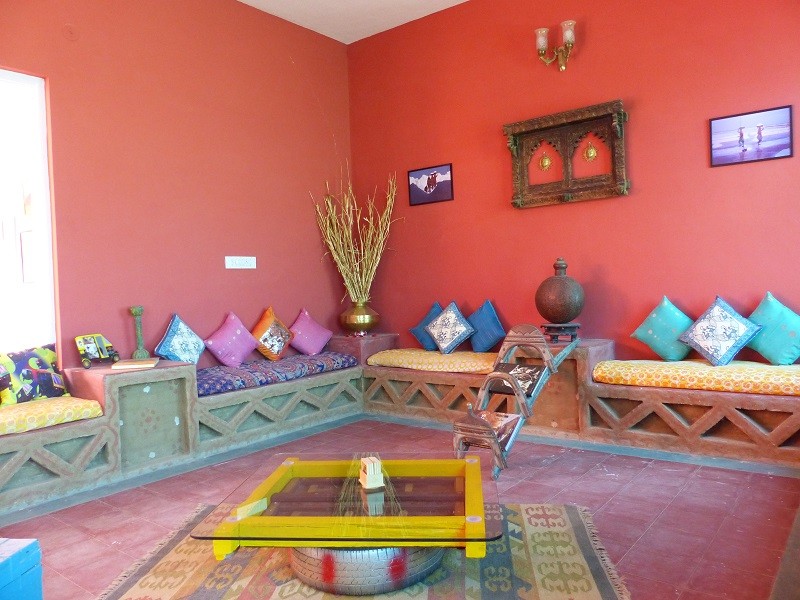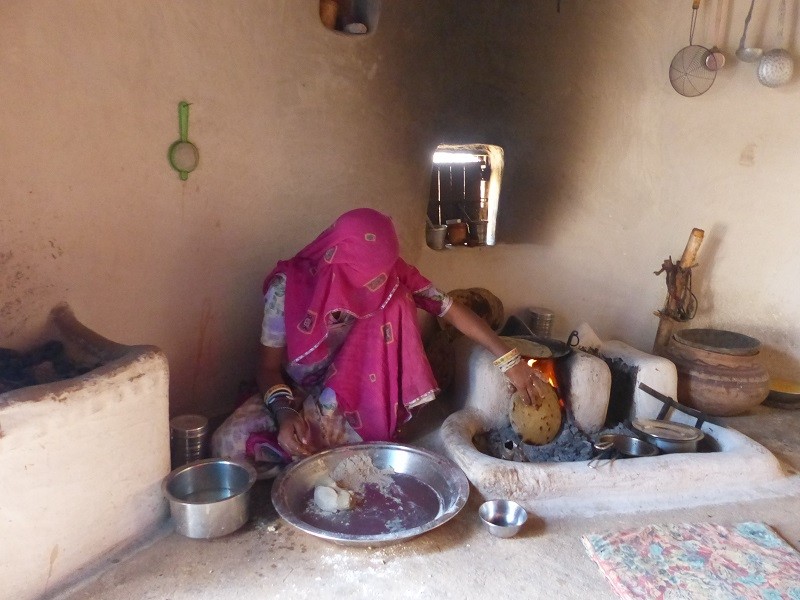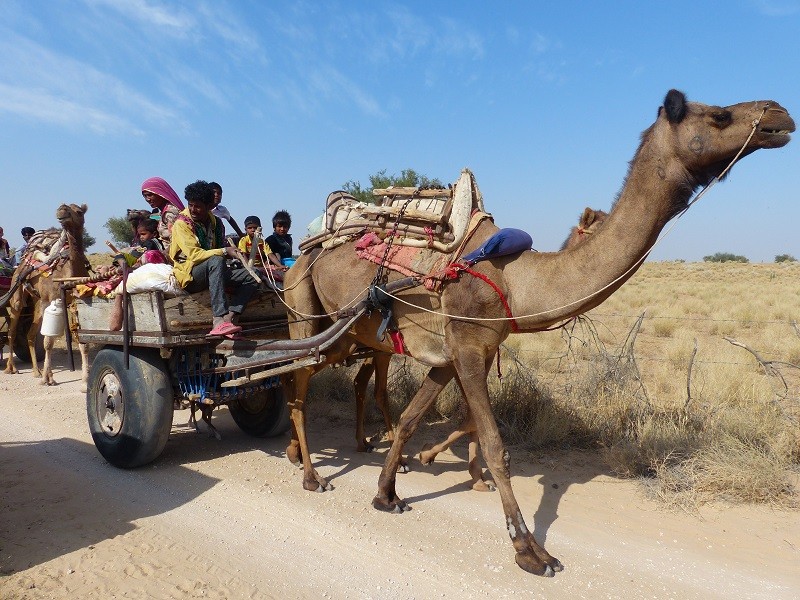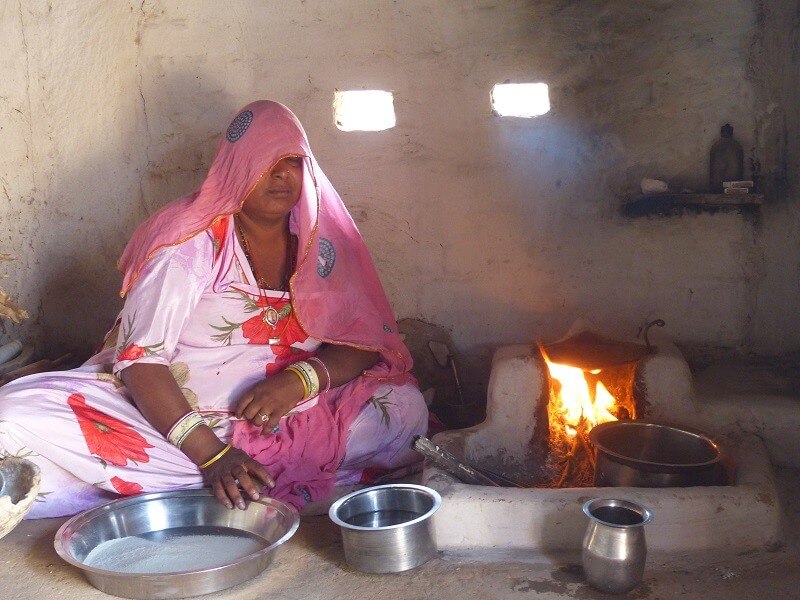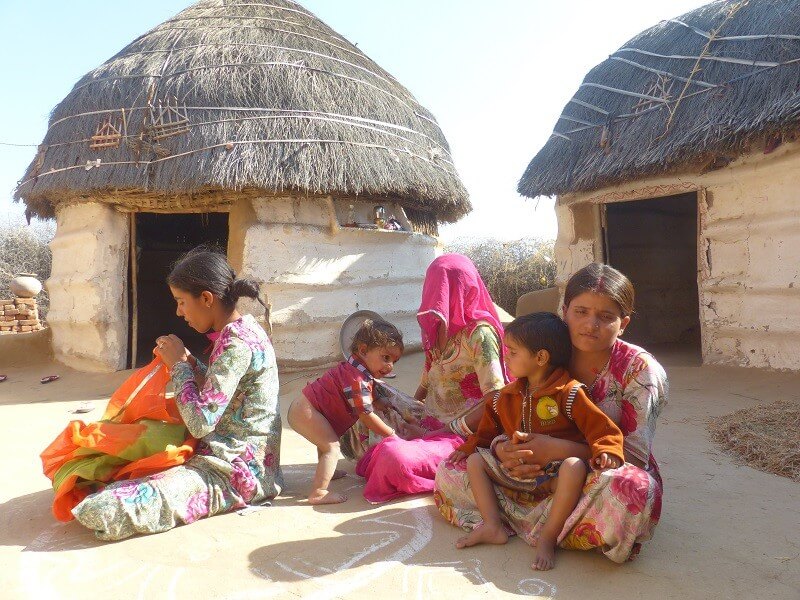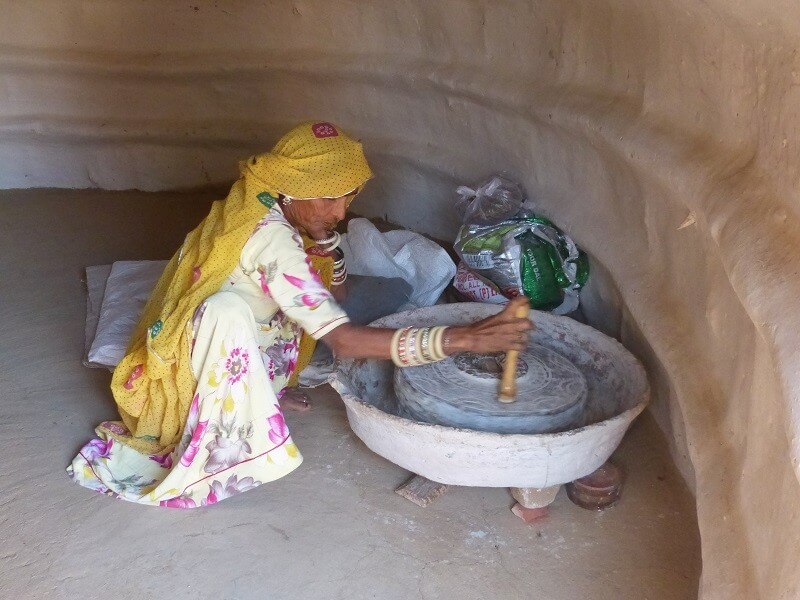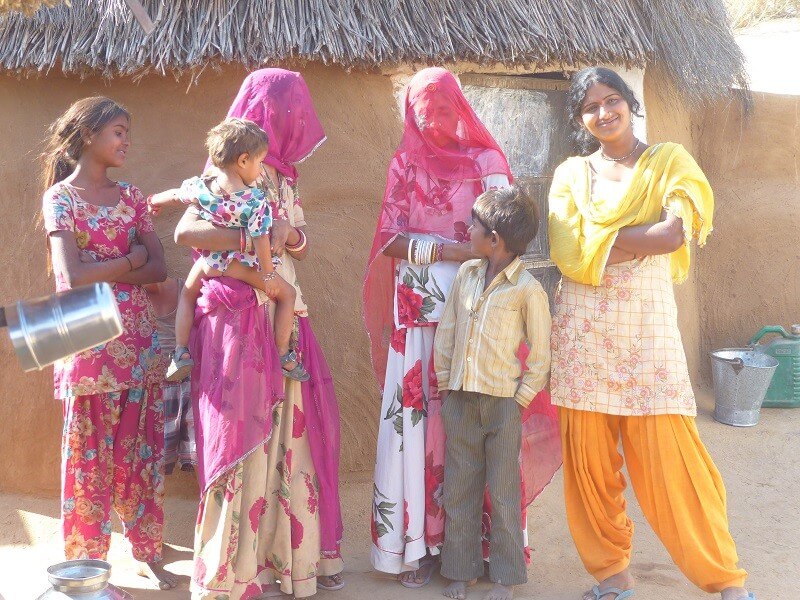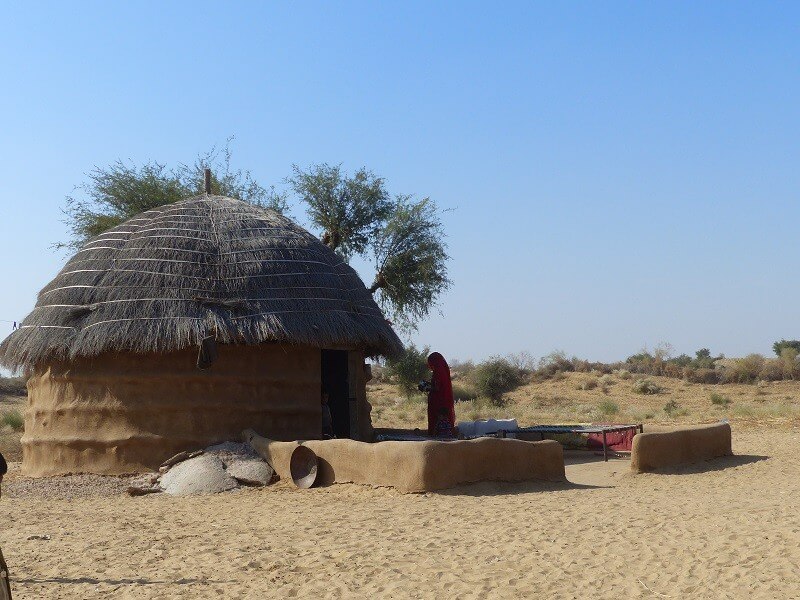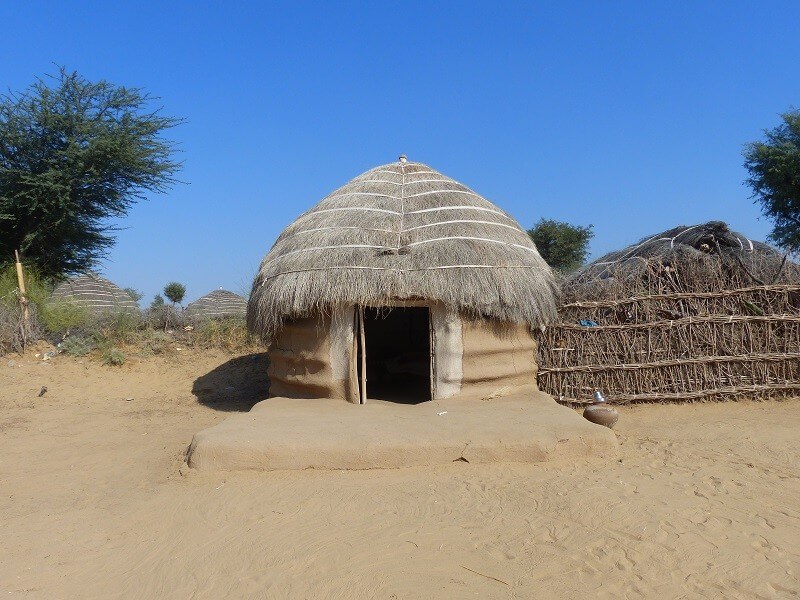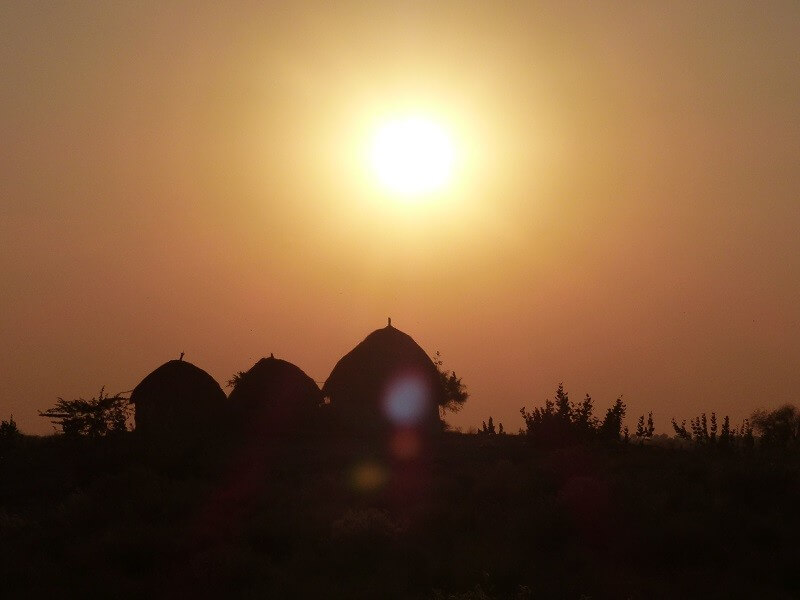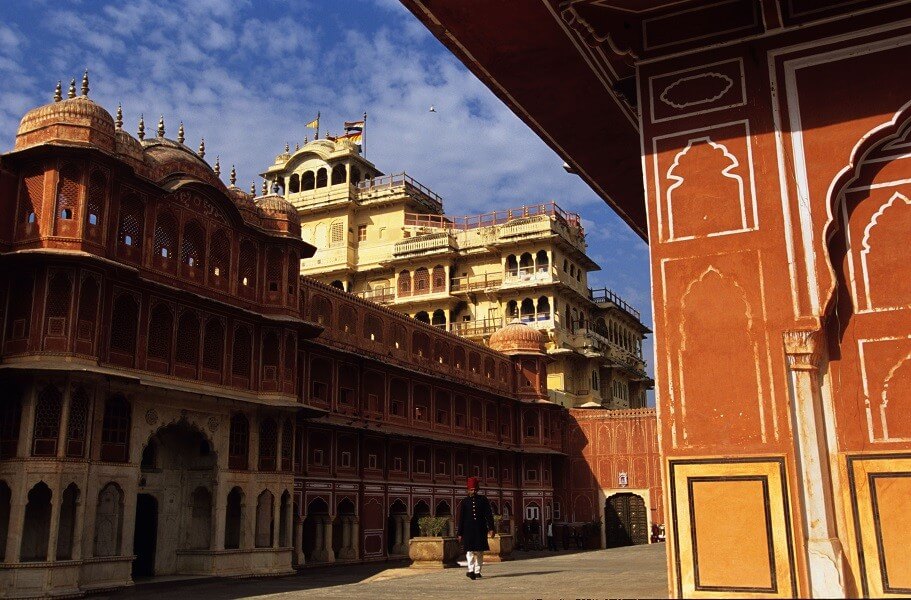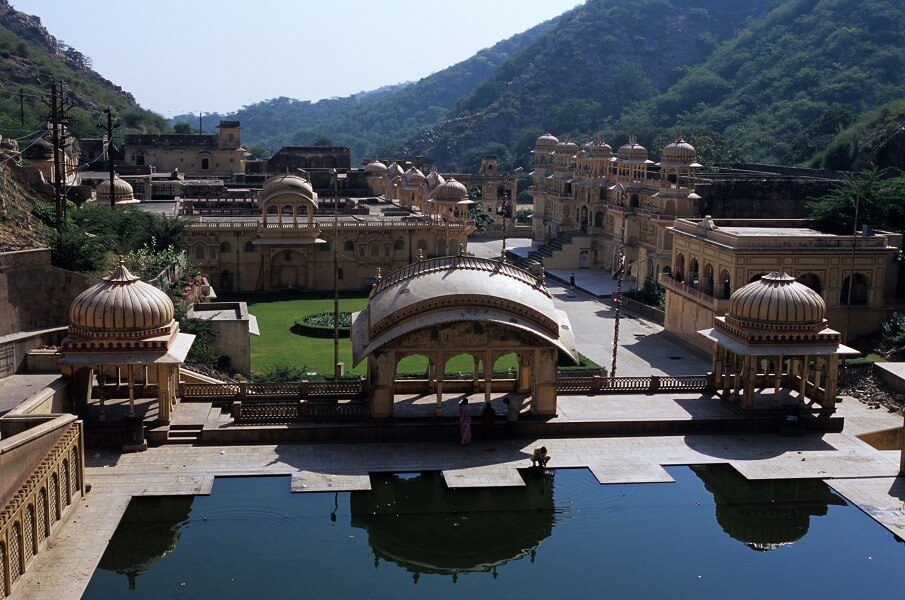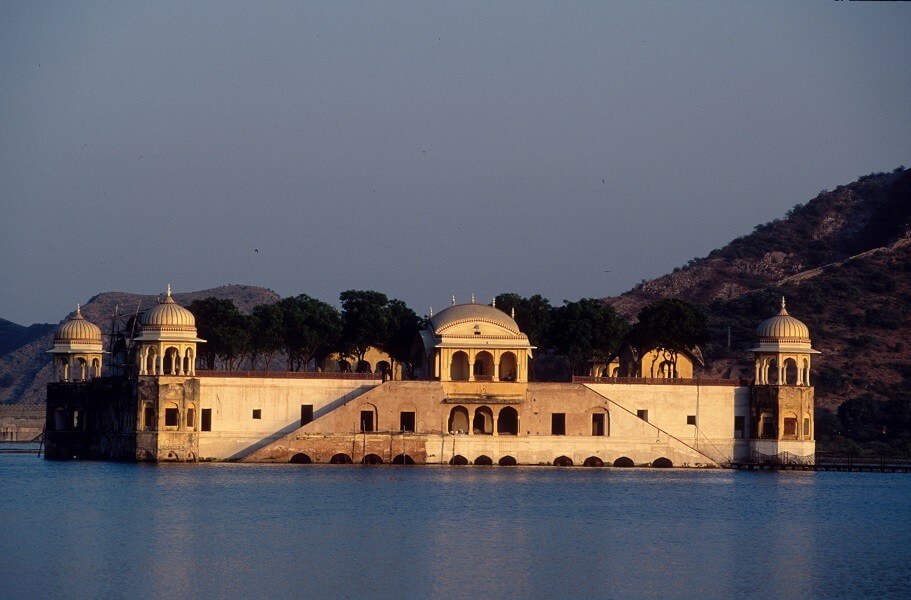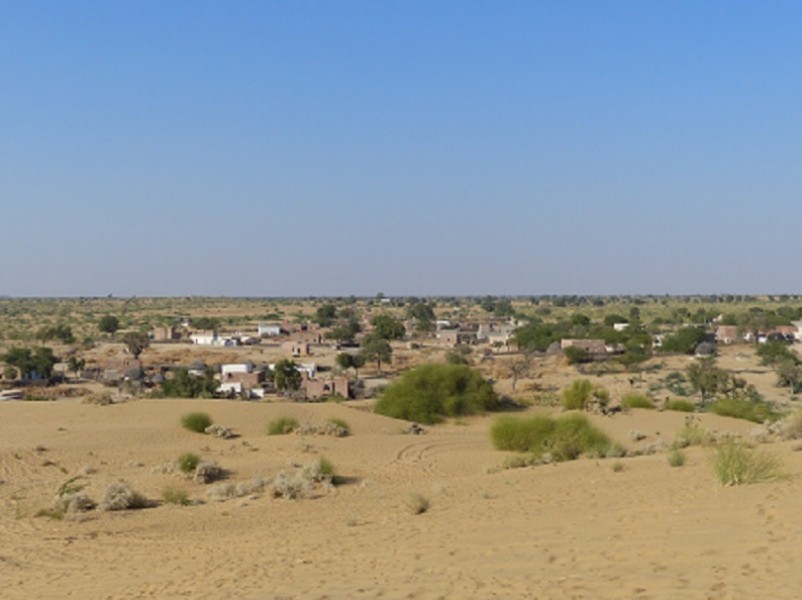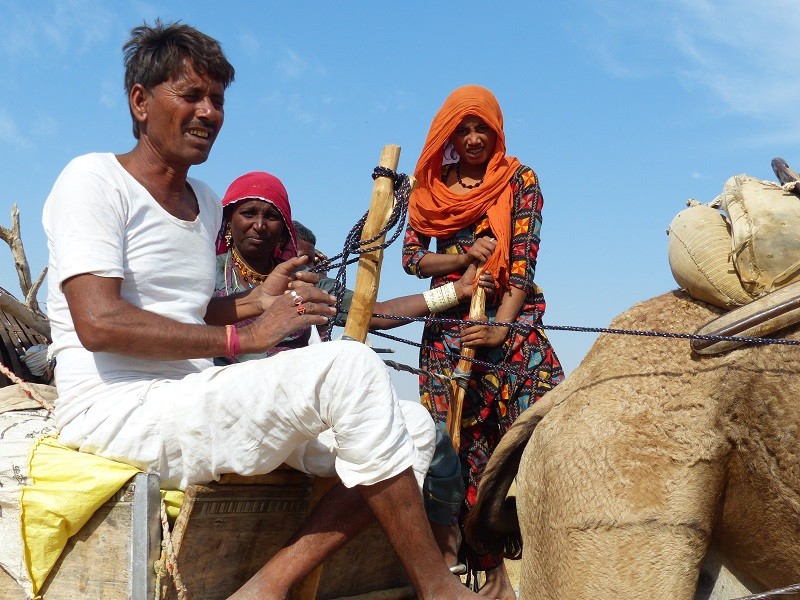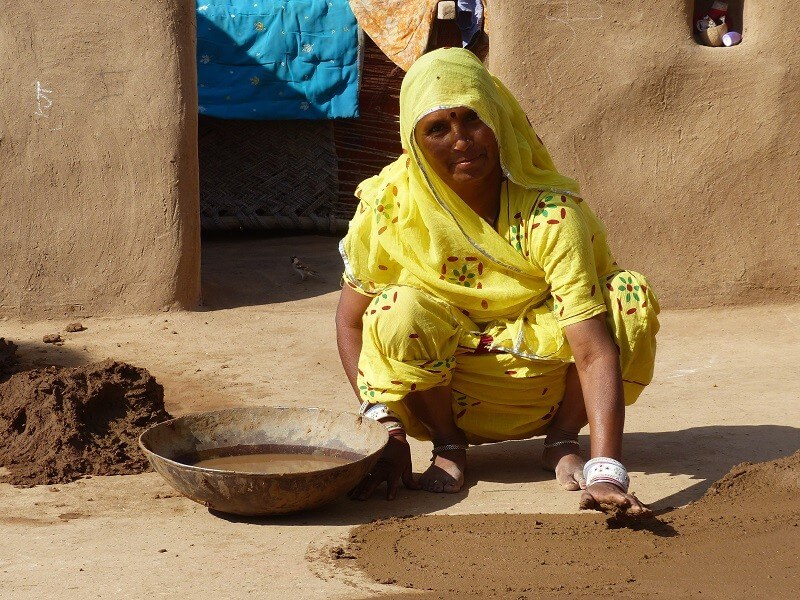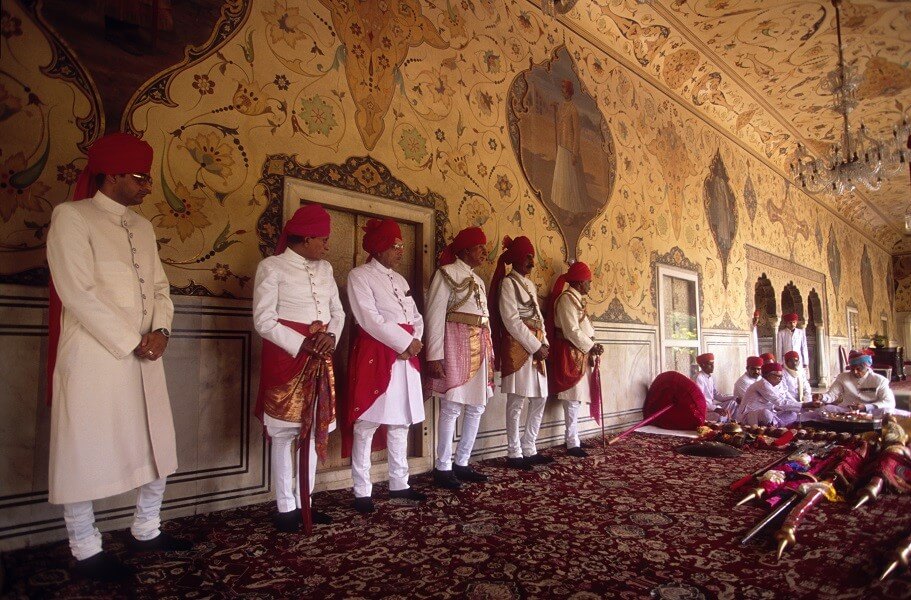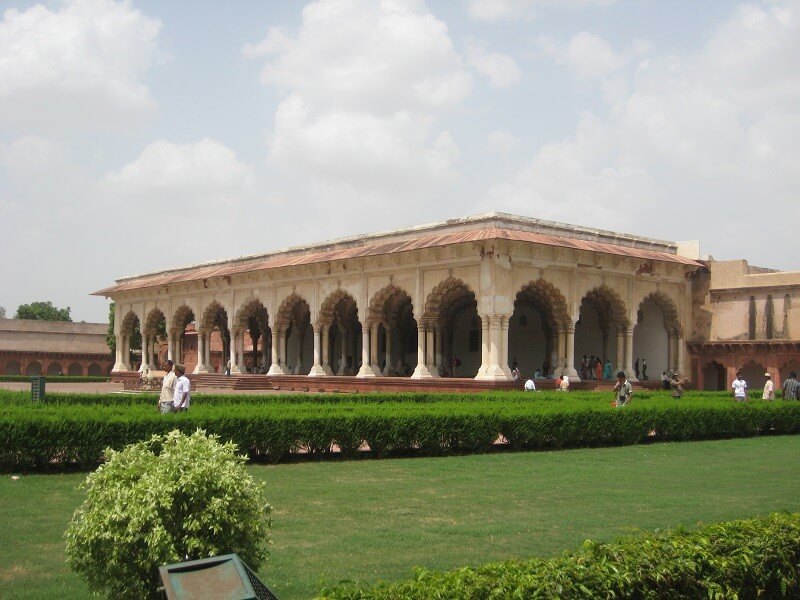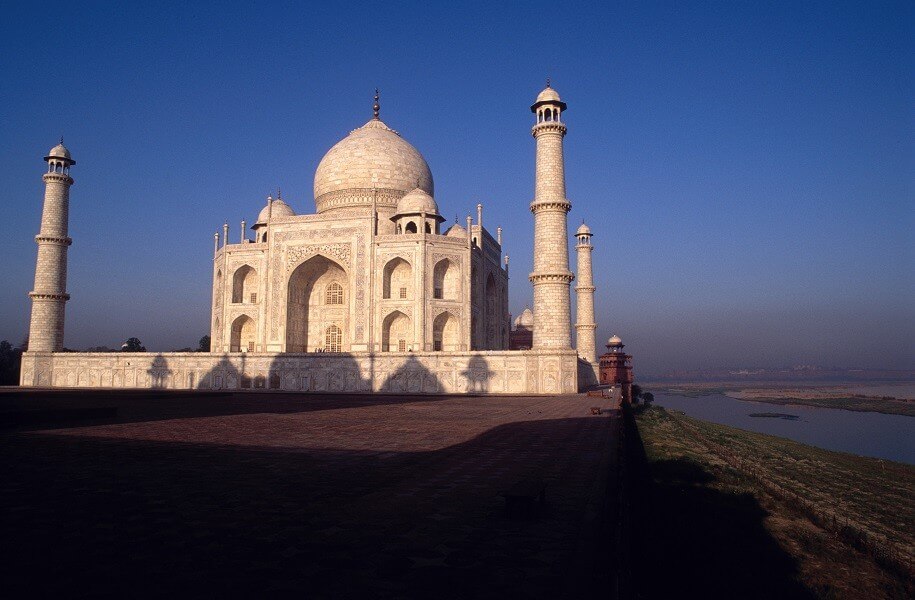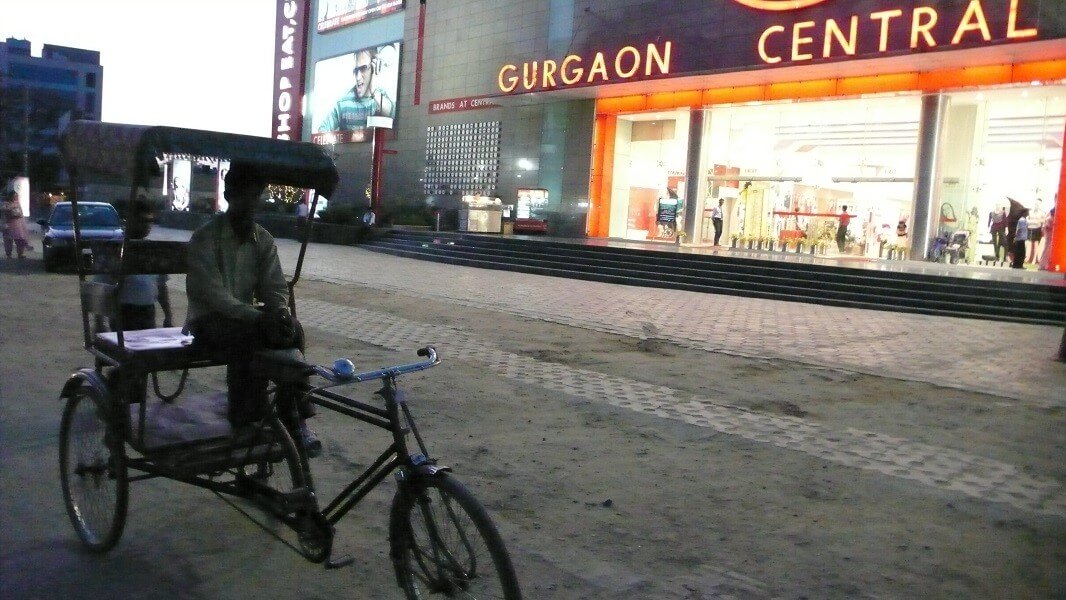IMMERSION Desert / Village Life
For what is referred to as a desert, Rajasthan is amazingly populated: its landscape scattered with a number of villages and hamlets, telltale signs of tree groves and populations of cattle being the only indication that there is such a settlement in close proximity.
The typical village has always been difficult to spot till one is actually upon it. Its simplest hamlets, the most basic form of civilisation with a way of life that has probably remained unchanged since centuries, consists of a collection of huts that are circular, and have thatched roofs.The walls are covered with a plaster of clay, cow dung, and hay, making a termite-free (antiseptic) facade that blends in with the sand of the countryside around it. Boundaries for houses and land holdings, called baras, are made of the dry branches of a nettle-like shrub, the long, sharp thorns a deterrent for straying cattle.
If a hamlet looks bleak, it is hardly surprising: the resources for building these homes, which are the most eco-friendly living unit, are made with what is available at hand, and in Rajasthan, and particularly so in its western desert regions. This can mean precious little. A village that is even a little larger may have pucca houses, or larger living units, usually belonging to the village Zamindar family. Consisting of courtyards, and a large Nora or cattle enclosure, attached to one side or at the entrance, these are made of a mixture of sun-baked clay bricks covered with a plaster of lime.
Read more
Siyana - 1 Night

